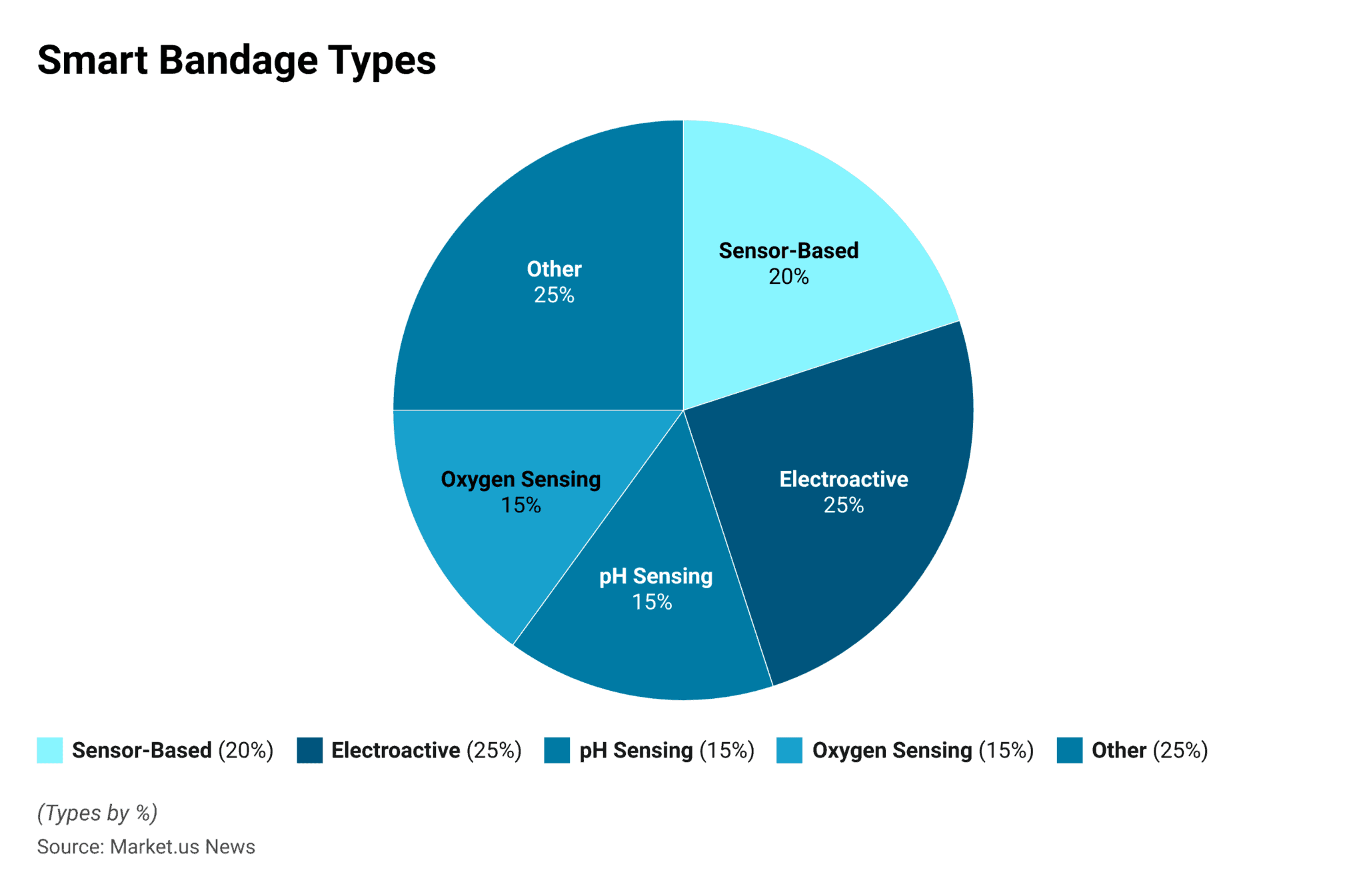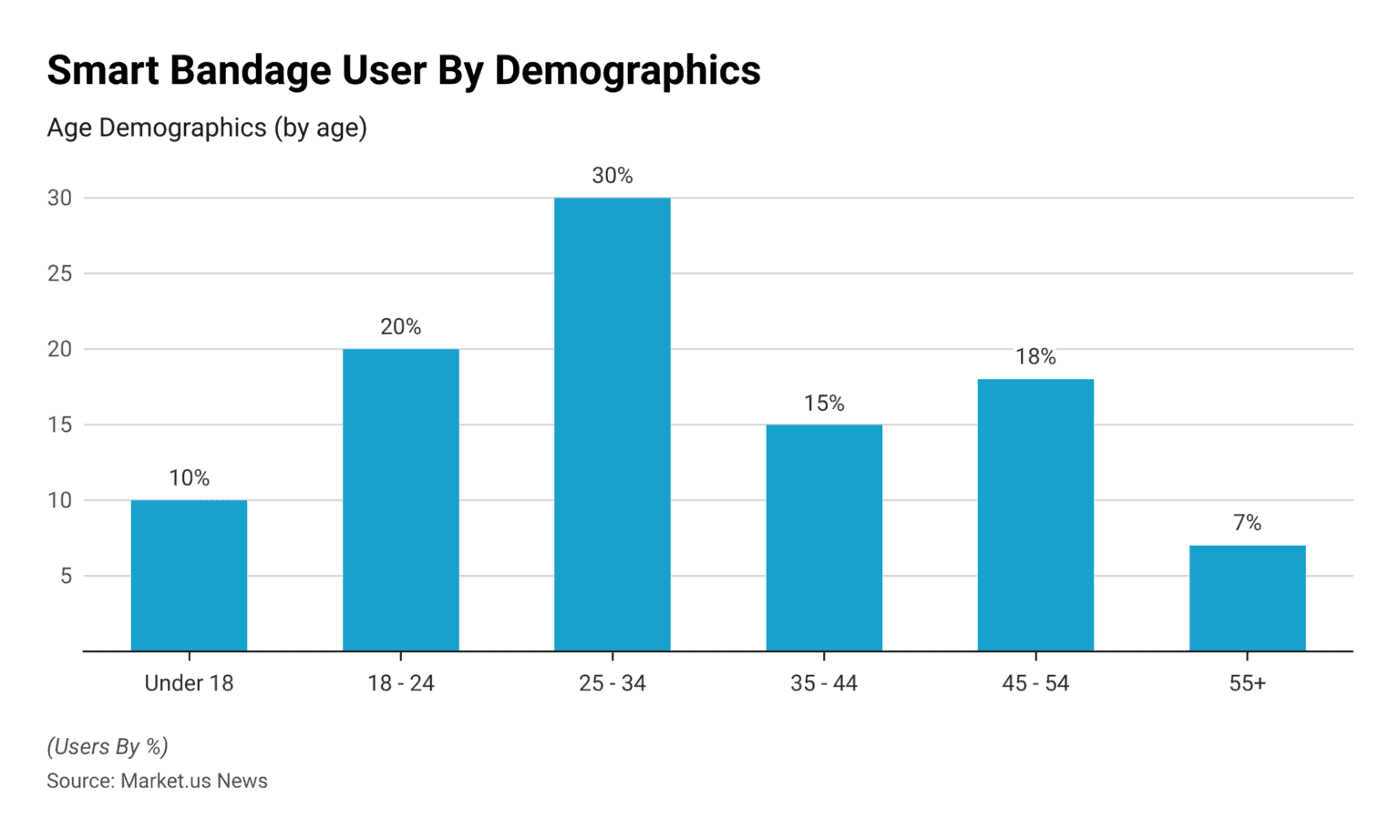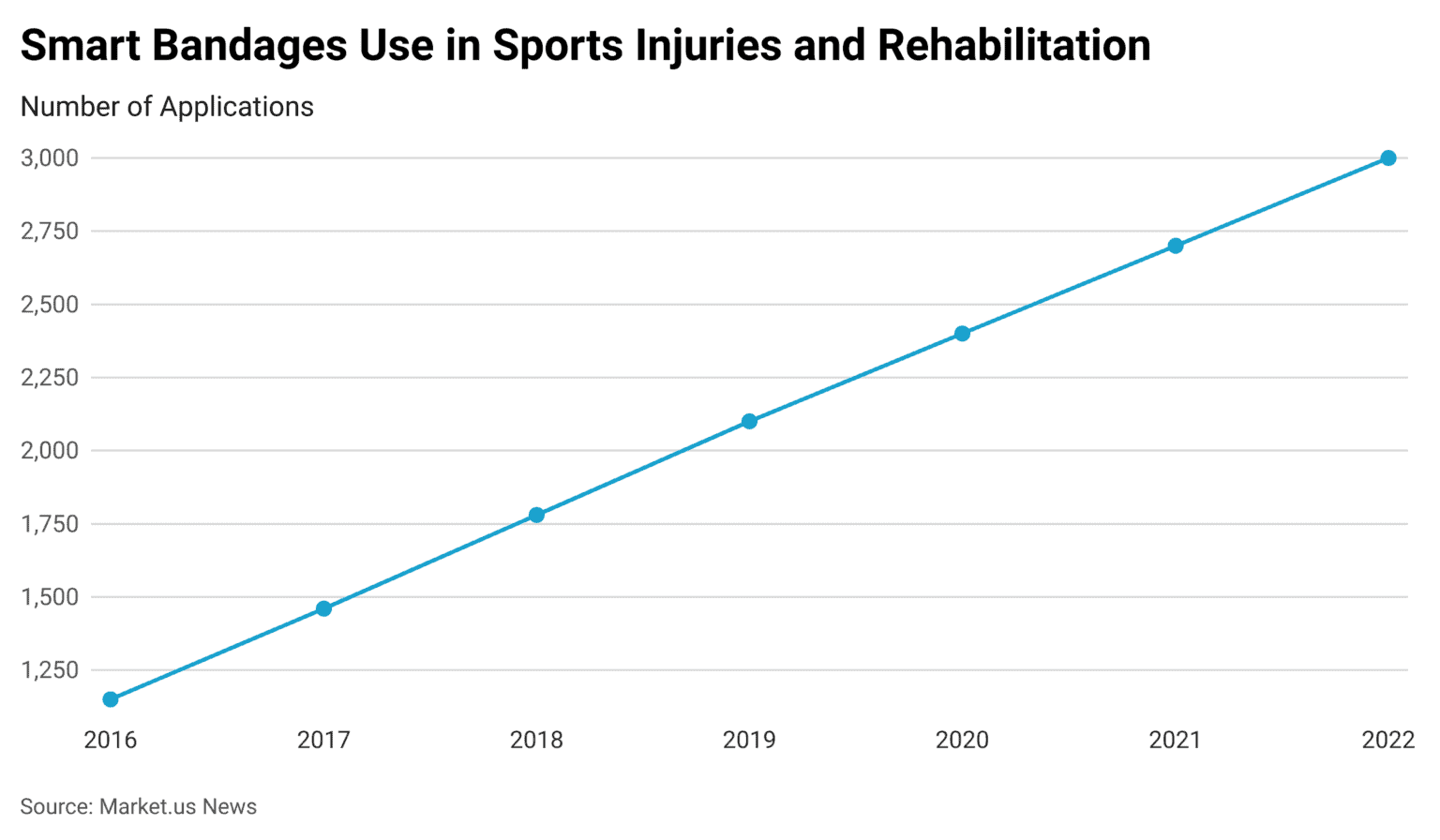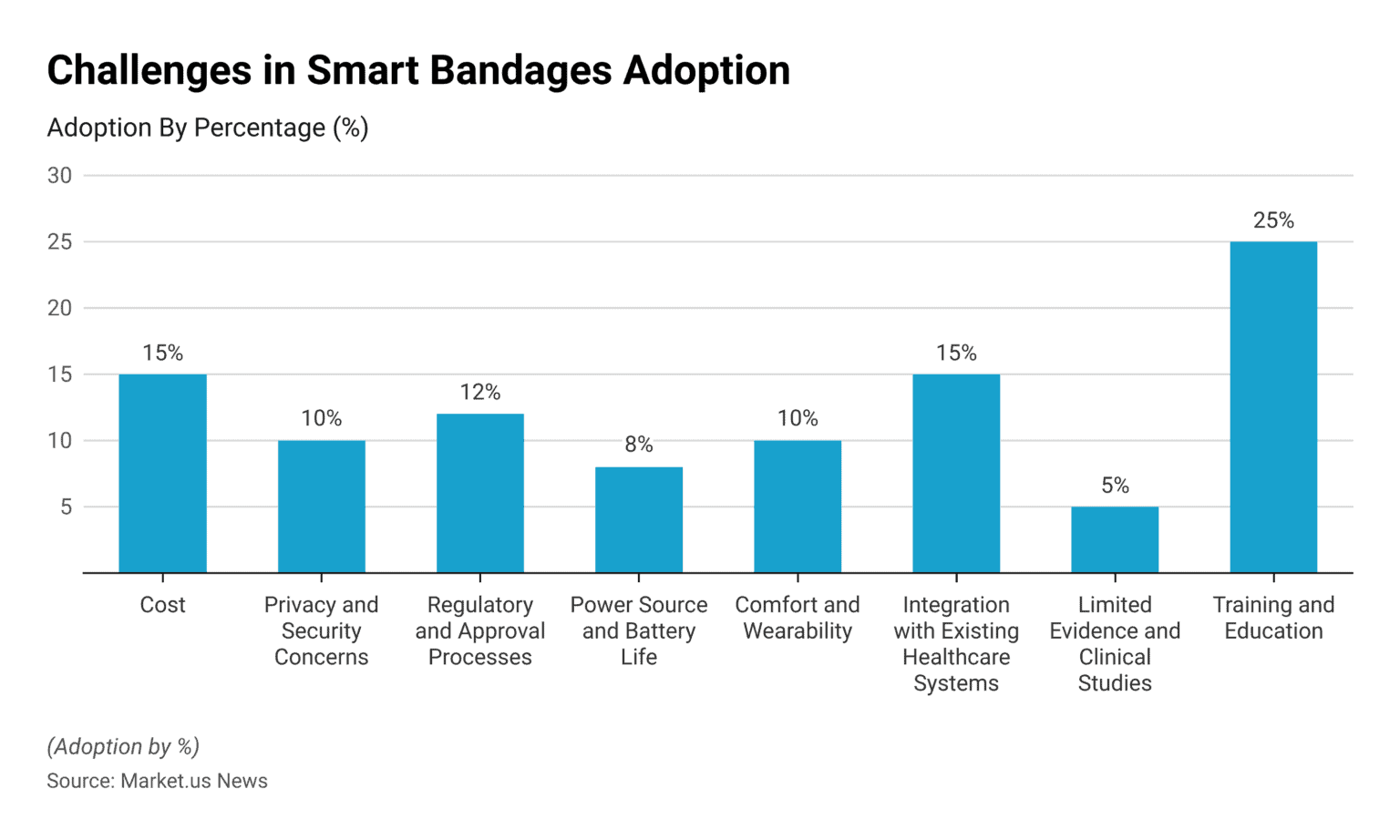New York, June 14, 2023 (GLOBE NEWSWIRE) -- Smart bandages, also known as intelligent or digital bandages, are an innovative advancement in wound care technology. Leveraging the power of data and real-time monitoring, these bandages have the potential to revolutionize wound care and treatment outcomes.
Editor’s Choice
- In 2022, the global market for smart bandages was estimated at $1.5 billion. Driven by technological advancements and growing demand for advanced wound care, the market is expected to reach $2.9 billion by 2027, registering a CAGR of 14.1%.
- North America Dominated the global smart bandages market with the largest market share of 43% in 2022.
- Major players in the smart bandages industry include names like 3M, Medtronic, Smith & Nephew, and others.
- Smart bandages have high demand in chronic wound management and post-surgical care.
- The COVID-19 pandemic has significantly influenced the healthcare sector, accelerating the adoption of telehealth and remote patient monitoring systems, including smart bandages.
Types of Smart Bandages
- Sensor-based Smart Bandages: These bandages contain sensors capable of monitoring various parameters at the wound site, including temperature, moisture level, pH levels, and pressure. Real-time data provided to healthcare providers allows them to track healing progress more closely and assess progress at regular intervals.
- Drug-Infused Smart Bandages: These bandages are specifically designed to deliver medication directly to wound sites. With integrated drug delivery systems that release therapeutic agents at regular intervals over an extended period, this type of bandage is particularly suitable for chronic wounds or infections needing localized treatment.
- Electroactive Smart Bandages: These bandages use electrical stimulation to accelerate wound healing. Their low-level electrical currents stimulate tissue regeneration and blood circulation near the wound site, hastening the healing process.
- Temperature-Sensitive Smart Bandages: These bandages contain thermoresponsive materials or indicators that change color based on the temperature of a wound, enabling healthcare providers to quickly detect any potential signs of infection or inflammation through visual inspection.
- pH-Sensing Smart Bandages: These bandages contain thermoresponsive materials or indicators that change color based on the temperature of a wound, enabling healthcare providers to quickly detect any potential signs of infection or inflammation through visual inspection.
- Oxygen-Sensing Smart Bandages: These bandages contain oxygen sensors to measure oxygen levels at the wound site. This feature makes them particularly effective at monitoring chronic wounds or post-surgical wounds where adequate oxygen supplies are essential to their successful healing.
User Preference for Different Types of Smart Bandages
According to a study by NIH,
- The electroactive smart bandages have high demand with a user percentage of around 25%.
- About 20% of users prefer sensor-based smart bandages for wound care followed by drug-infused, oxygen-sensing, and pH-sensing smart bandages with 15% each.

Smart Bandages Users by Age Demographics
- Peoples aged 25-34 years are more likely to use smart bandages with 30%.
- About 20% of users aged 18-24 years use smart bandages for their wound care and chronic wound monitoring.
- 18% of peoples aged 45-54 years uses smart bandages for their wound care followed by peoples aged 35-44 years with 15%.
- The use of smart bandages is comparatively less in people aged 55+ and under 18 with 7% and 10% respectively.

Applications of Smart Bandages
Wound Monitoring and Management
By continuously measuring various wound parameters such as temperature, moisture levels, pH balance, and oxygenation levels in real-time, healthcare providers can assess wound healing progress more accurately, identify infections or complications and tailor treatment plans accordingly.
- According to research published in Biosensors and Bioelectronics journal, smart bandage systems successfully detected wound infections with an impressive 90/10 sensivity/specificity ratio.
- According to research published by Journal of Wound Care, smart bandages can accurately monitor wound temperature changes with an accuracy rate of 0.33degC on average.
- A study in Sensors demonstrated their accuracy rate as being at 88% when monitoring the oxygenation of wounds.
- According to research published in the Journal of Biomedical Materials Research, smart bandages were capable of detecting wound infections with 93% sensitivity and 98% specificity.
Chronic Wound Care
Smart bandages provide valuable insights into wound conditions, enabling healthcare providers to intervene more promptly and enhance the healing process. These bandages give healthcare providers information about each wound condition so they can intervene at just the right time and promote faster recovery times.
- According to WHO chronic wounds affects approximately 4.5 million peoples in the United States alone, and the global prevalence is projected to be around 40 million.
- In the United States, the annual cost of chronic wound care exceeds USD 25 billion including direct medical costs and indirect medical costs such as loss of productivity and disability.
- According to a study published in the Journal of Wound Care, smart bandages showed 78% accuracy in assessing wound size compared to traditional wound measurement methods.
- Smart bandages detect wound infections with an accuracy of 93%.
Sports Injuries and Rehabilitation
Athletic injuries such as sprains, strains, and abrasions are a frequent threat to athletes. Smart bandages equipped with sensors can monitor healing progress while tracking range of motion and providing feedback about rehabilitation exercises - essential data points that can aid recovery protocols and reduce risks of reinjure.

Telemedicine and Remote Monitoring:
Smart bandages integrated with wireless connectivity enable remote monitoring of wounds. Patients can transmit wound data to healthcare providers without the need for frequent in-person visits, allowing for more convenient and efficient follow-up care, especially for individuals in remote locations or with limited mobility.
- Remote wound monitoring using smart bandages resulted in a 90% reduction in in-person clinic visits.
- Ostomy, and Continence Nursing in 2018 reported that 91% of patients found remote wound monitoring using smart bandages to be convenient.
- Remote monitoring with smart bandages could save up to £3,000 per patient per year.
Challenges in the Adoption of Smart Bandages
- Cost: Smart bandages often involve advanced materials, sensors, and connectivity features, which can make them more expensive than traditional bandages. The cost of smart bandages may limit their accessibility and hinder widespread adoption, especially in resource-constrained healthcare settings.
- Regulatory and Approval Processes: Smart bandages, like any medical device, need to meet regulatory standards and undergo rigorous approval processes before they can be used in clinical settings. Navigating the complex regulatory landscape can be time-consuming and costly, potentially delaying the availability of smart bandages for widespread use.
- Integration with Existing Healthcare Systems: Seamless integration of smart bandages into existing healthcare systems, such as electronic health records (EHRs) or clinical decision support systems, can be challenging. Interoperability issues and compatibility with different systems need to be addressed to ensure efficient data sharing and utilization.
- Privacy and Security Concerns: Smart bandages collect and transmit sensitive patient data, including wound healing progress, vital signs, and personal health information. Ensuring the privacy and security of this data is crucial to protect patient confidentiality. Robust data encryption, secure transmission channels, and adherence to privacy regulations are essential to mitigate the risks of data breaches and unauthorized access.
- User Education and Training: Healthcare professionals need to be trained in using and interpreting the data generated by smart bandages effectively. Education programs and training initiatives are necessary to ensure healthcare providers can utilize the full potential of smart bandages and make informed decisions based on the data they provide.

Wrap Up:
Smart Bandages Statistics: Smart bandages have captured substantial attention within the healthcare sector owing to their immense potential in the realms of wound monitoring, medication delivery, and remote patient monitoring. These innovative bandages hold the promise of revolutionizing wound care practices and enhancing patient outcomes. However, to unlock their full benefits, it is imperative that we embark upon further research endeavors, foster groundbreaking innovations, and foster collaboration among key stakeholders. Only through such concerted efforts can we surmount the hurdles that lie ahead and truly harness the transformative power of these smart bandages.
Related Statistics Topics From Market.us News:
- Wearable Healthcare Technology Statistics By Users, Companies, and Market Growth
- Digital Therapeutics Statistics By Adoption, Key Players, and Market Growth
- Remote Patient Monitoring Statistics Revealed – Healthcare at a Distance
- mHealth Apps Statistics, Market Growth and A Comprehensive Analysis of App Usage
- AI in Healthcare Statistics – A Statistical Journey into Healthcare’s Future
- Smart Pills Statistics – Market Growth and Adoption
About Us
Welcome to Market.us News, your ultimate destination for in-depth statistics and insights into the ever-evolving world of healthcare, medical advancements, and cutting-edge technology. Our mission is to provide you with accurate, reliable, and unbiased data that empowers you to make well-informed decisions, optimize healthcare outcomes, and contribute to the ongoing evolution of the medical landscape.
Established in 2017, Market.us News was founded by a diverse group of healthcare professionals, data analysts, and industry experts with a shared passion for harnessing the power of data to drive positive change in the world of medicine. Our team is dedicated to breaking down complex subjects and making them accessible to all, from medical practitioners and researchers to policymakers and patients.
At Market.us News, we prioritize data integrity and strive to deliver the most up-to-date, trustworthy, and relevant information to our audience. We meticulously gather and analyze data from an extensive network of reputable sources, ensuring our statistics meet the highest standards of accuracy and credibility. Our comprehensive reports cover a wide range of topics, including medical research, healthcare trends, emerging technologies, patient care, and much more. Join us on our journey as we explore the vast world of medical data and unlock the potential of evidence-based decision-making. Welcome to Market.us News – where healthcare meets data.
